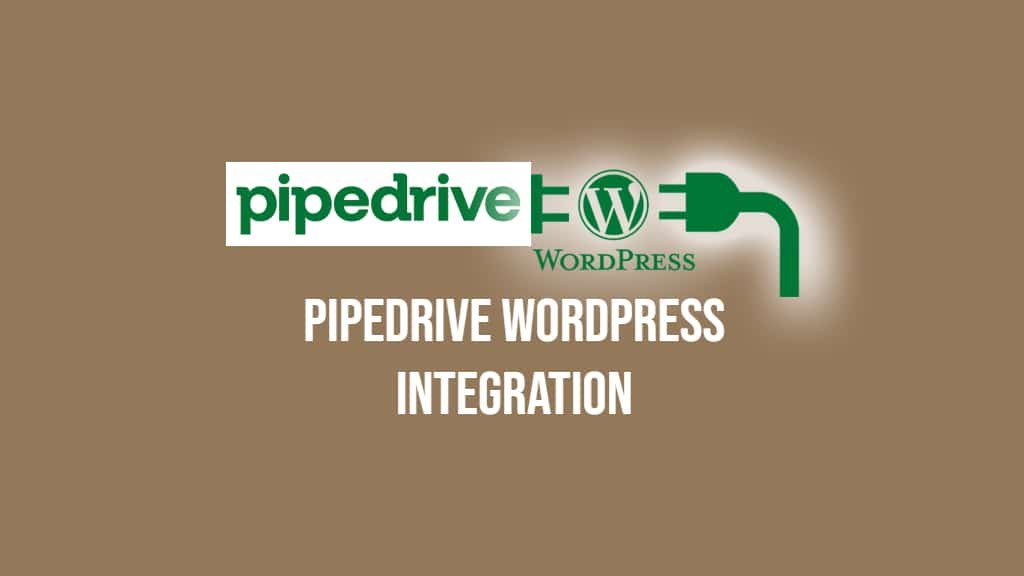In the intricate world of CRM and digital content management, the integration between platforms like Pipedrive and WordPress signifies a transformative approach to business processes. The collaboration between these two giants has piqued the interest of businesses across various sectors. This article presents an exhaustive examination of the Pipedrive and WordPress integration, exploring its benefits, pros and cons, a review of its features, the integration process, and alternatives.
Pipedrive WordPress Integration has emerged as a cutting-edge solution for businesses aiming to combine the robustness of Pipedrive’s CRM capabilities with WordPress’s versatile content management system. By embracing Pipedrive WordPress Integration, organizations can leverage a wide array of features, including real-time lead capture from WordPress to Pipedrive, automated data synchronization, customized mapping of form fields, and personalized content delivery based on Pipedrive’s insights. The Pipedrive WordPress Integration not only signifies a technological advancement but also a strategic alignment that resonates with the modern business’s need for agility, precision, and customer-centricity. The strength of Pipedrive WordPress Integration lies in its adaptability, allowing businesses of various scales and domains to fine-tune the integration to suit their unique requirements and objectives. From small enterprises to large corporations, Pipedrive WordPress Integration offers a seamless, efficient, and highly customizable pathway to enhanced customer relationship management and content delivery.
Benefits of Pipedrive and WordPress Integration
A. Streamlined Lead Management
Integration ensures that leads captured through WordPress are directly funneled into Pipedrive, facilitating seamless lead tracking and management.
B. Automated Data Synchronization
This collaboration enables real-time data sharing between the platforms, minimizing manual data entry.
C. Enhanced Customer Insights
The unified data enables personalized marketing and content strategies, improving customer engagement.
Pros and Cons
A. Pros
- Efficiency: Automation of data transfer saves time.
- Accuracy: Reduces human error in data entry.
- Scalability: Adaptable to different business sizes and needs.
- Customization: Allows for tailored solutions.
B. Cons
- Complexity: May require technical expertise for full customization.
- Cost: Some plugins or custom solutions may be expensive.
- Dependency: Relying on third-party plugins might lead to compatibility issues in the future.
Review
A. Functionality
Pipedrive and WordPress integration offers comprehensive functionalities, from lead capture to detailed analytics.
B. Usability
Most integrations are user-friendly, with several plugins offering intuitive interfaces.
C. Support and Documentation
Many plugins provide substantial support and documentation, but custom solutions might vary in this regard.
D. Rating
Overall, the integration is highly regarded, offering substantial value. However, individual experiences may vary based on the specific tools and customization used.
How to Integrate
A. Choose the Right Tool
There are both plugins and custom solutions available.
B. Installation and Configuration
- Install the chosen plugin or solution.
- Configure it by entering Pipedrive API credentials and customizing the settings.
C. Customize the Integration
Tailor the integration to align with specific needs, such as mapping form fields to Pipedrive properties.
D. Test and Validate
Conduct extensive testing to ensure the integration’s proper functioning.
Alternatives
A. Other CRM Integrations
- Salesforce with WordPress: Offers similar functionalities but might differ in pricing and customization options.
- HubSpot with WordPress: Known for its extensive marketing features.
B. Custom Development
Investing in a custom-built solution to perfectly align with unique business needs.
Conclusion
The integration of Pipedrive with WordPress represents a synergistic approach to lead management, sales tracking, and personalized customer engagement. The benefits are palpable, and the pros largely outweigh the cons. However, consideration must be given to potential complexities and costs.
Integration is generally accessible through the use of plugins, but those seeking a more tailored approach may opt for custom development. Alternatives exist, but the choice should align with the specific business objectives and technological requirements.
In sum, Pipedrive and WordPress integration offers a robust and flexible solution, heralding a new era in the alignment of CRM and content management. It warrants consideration by any organization seeking to enhance efficiency, accuracy, scalability, and customization in their lead and customer management processes. Careful planning, selection of the right tools, and attention to detail in implementation can unlock its full potential.



